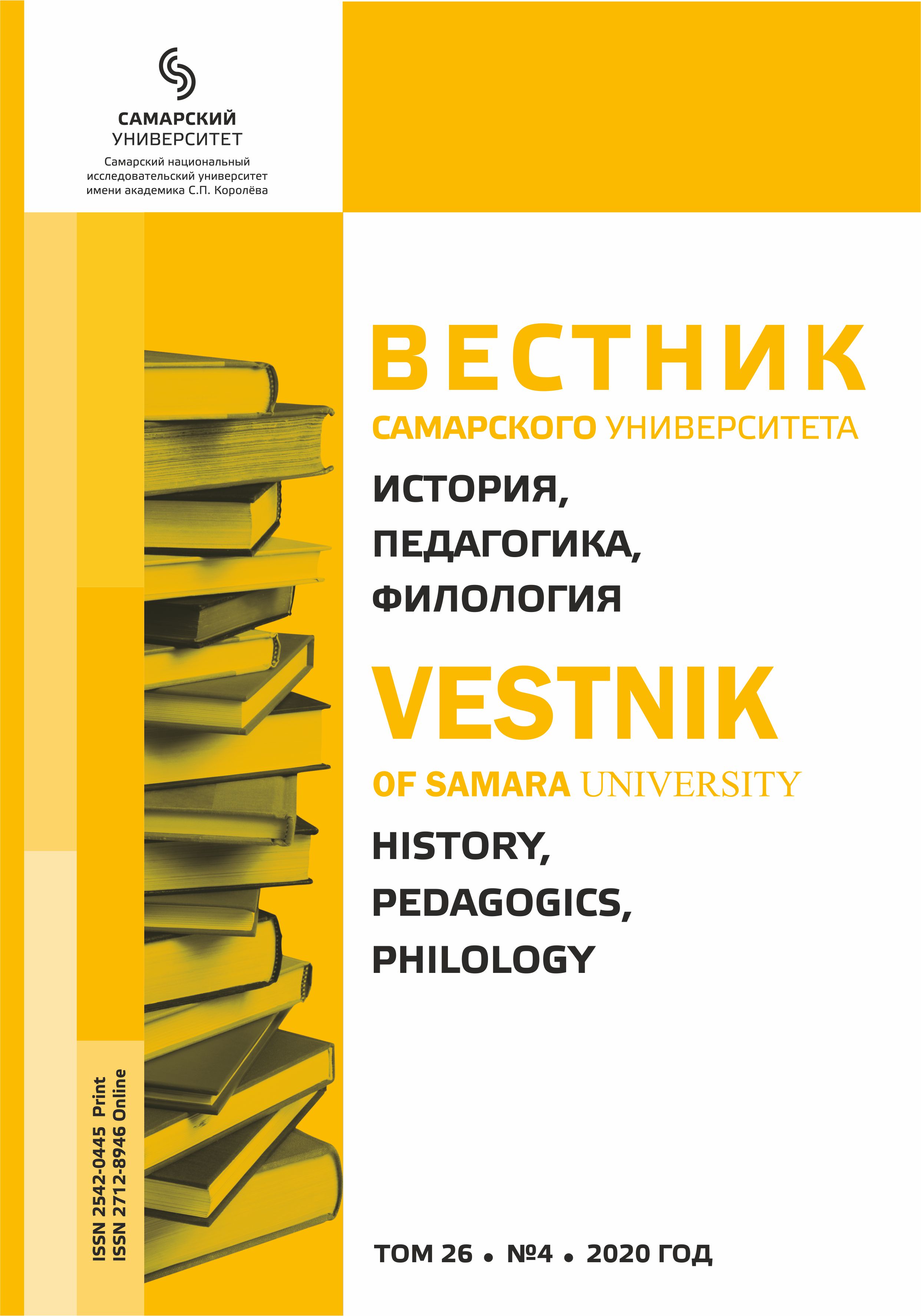Precedent hagionyms as means to verbalize the concept of FAITH/UNBELIEF in contemporary German novels
- Authors: Blinova Y.A.1
-
Affiliations:
- Samara National Research University
- Issue: Vol 26, No 4 (2020)
- Pages: 115-122
- Section: Articles
- URL: https://journals.ssau.ru/hpp/article/view/8270
- DOI: https://doi.org/10.18287/2542-0445-2020-26-4-115-122
- ID: 8270
Cite item
Full Text
Abstract
The article analyses the use of precedent proper names of biblical origin from contemporary German novels through the perspective of cognitive linguistics. The precedent hagionyms are seen as markers of the religious mindset and a means to verbalize religious involvement and the linguo cultural concept of FAITH/UNBELIEF. The precedent hagionyms in artistic discourse are used denotatively, in comparative constructions, and as part of biblical phraseology; they act as means of expressing figurative and value components of the concept of FAITH due to their strong implicational features. When used denotatively, the hagionyms manifest not only their nominative identifying function but a characterizing one as well, since every such hagionym is supported by a precedent, either an event or a text. Phraseological units containing hagionyms act as reference models for evaluation of current events, phenomena or states; they are also used humorously and ironically and as such demonstrate scepticism and negative attitudes of the speaker towards the objects of their speech, thus manifesting the concept of UNBELIEF. Hagionyms in the speech of contemporary characters contribute to the emotionality of their utterances. On the one hand, precedental hagionyms in contemporary German fiction testify that a layer of Christian culture still exists in the German language. On the other hand, the peculiarities of their usage demonstrate that linguocultural concept of FAITH is being transformed and filled with everyday phenomena and a new ‘patchwork’ religious identity is being formed
About the authors
Y. A. Blinova
Samara National Research University
Author for correspondence.
Email: jublinova@mail.ru
ORCID iD: 0000-0002-2876-8826
Candidate of Philological Sciences, associate professor at the Department of German Philology
Russian Federation, 34, Moskovskoye shosse, Samara, 443086, Russian FederationReferences
- Debus 2004 – Debus F. (2004) Funktionen literarischer Namen. Sprachreport, no. 1, S. 2–9. Available at: http://pub.ids-mannheim.de/laufend/sprachreport/pdf/sr04-1a.pdf.
- Koller 2011 – Koller W. (2011) Redensarten: Linguistische Aspekte, Vorkommensanalysen, Sprachspiel. Tübingen: Max Niemeyer Verlag, Max Niemeyer Verlag, 232 S. DOI: http://doi.org/10.1515/9783111371139.
- Bugaeva 2006 – Bugaeva I.V. (2008) Sacred names in the mirror of translation. Nizhny Novgorod Linguistics University Bulletin, no. 3, pp. 51–67. Available at: https://www.elibrary.ru/item.asp?id=11667344. (In Russ.)
- Karasik 2004 – Karasik V.I. (2004) Language circle: personality, concepts, discourse. Moscow: Gnozis, 390 p. Available at: https://www.elibrary.ru/item.asp?id=19781342&; https://docplayer.ru/28188986-Yazykovoy-krug-lichnost-koncepty-diskurs.html. (In Russ.)
- Karaulov 2004 – Karaulov Yu.N. (2004) Russian Language and Linguistic Personality. 4th edition, stereotyped. Moscow: Editorial URSS, 264 p. Available at: https://www.elibrary.ru/item.asp?id=18836801; https://superlinguist.ru/russkii-iazyk-skachat-knigi-besplatno/karaulov-iu-n-russkii-iazyk-i-iazykovaia-lichnost.html. (In Russ.)
- Kovshova 2019 – Kovshova M.L. (2019) The analysis of idioms, riddles and proverbs from the perspective of language and culture studies. Anthroponomical culture code. Moscow: LENAND, 400 p. Available at: https://www.elibrary.ru/item.asp?id=38226723. (In Russ.)
- Pronina 2015 – Pronina T.S. (2015) Religious identity as a psychosocial phenomenon. Herald of the Russian Christian Academy for humanities, vol. 16, no. 2, pp. 154–166. Available at: https://www.elibrary.ru/item.asp?id=25692358. (In Russ.)
- Orehanov 2015 – Orehanov G. (2015) Patchwork-Religiosität: a Study on the Features of this Phenomena in the Modern German Context. St. Tikhon's University Review. Series I: Theology. Philosophy. Religious Studies, no. 6 (62), pp. 94–112. Available at: https://www.elibrary.ru/item.asp?id=24891560; https://pstgu.ru/download/1450180100.7_orekhanov_94-112.pdf. (In Russ.)
- Yablokov 2018 – Yablokov I.N. (2018) Religious Consciousness: Specificity, Levels, Representations. Voprosy Filosofii, no. 2, pp. 46–55. Available at: http://vphil.ru/index.php?option=com_content&task=view&id=1876&Itemid=52; https://www.elibrary.ru/item.asp?id=32611543. (In Russ.)
Supplementary files













